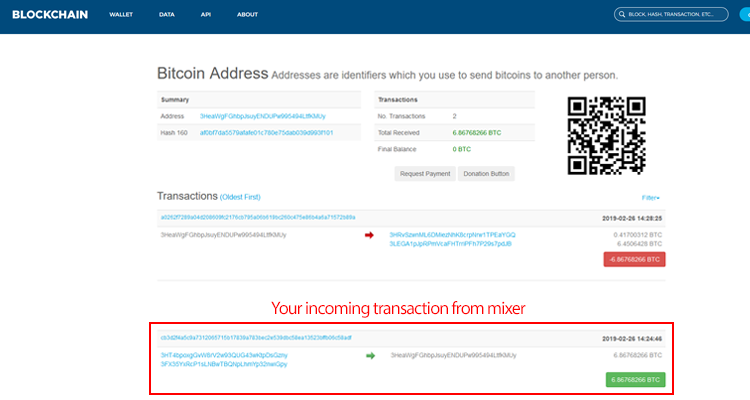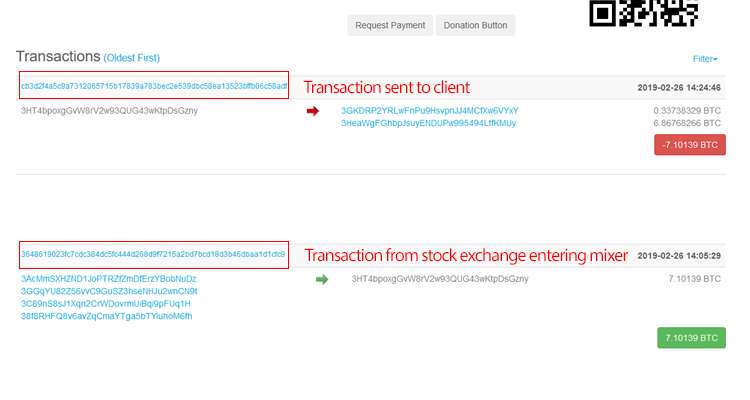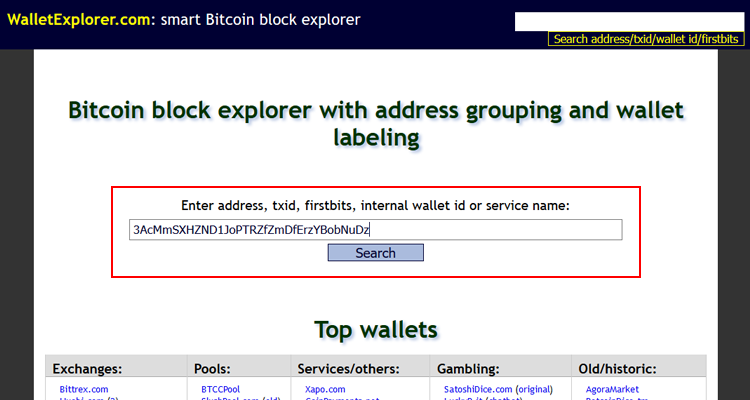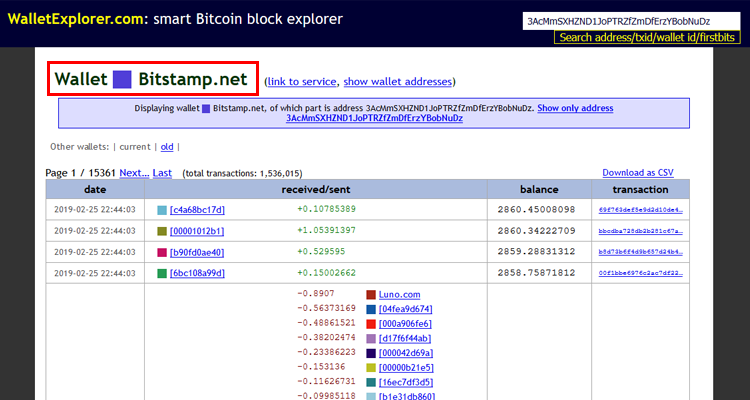How to check the quality of Bitcoin mixing by Mixer-money.com?
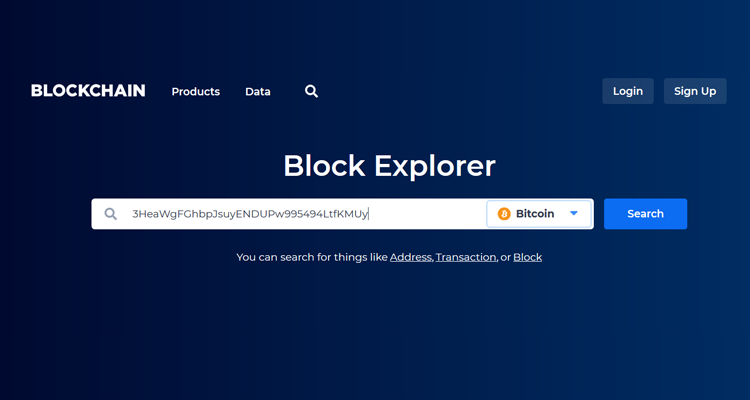
The “Complete anonymity” mode by Mixer-money.com guarantees an unmatched anonymity level for your cryptocurrency assets. The system swaps your money for verified coins from major crypto stock exchanges – as a result your receive money with a clean track record that is safe to use or/and exchange. “How on Earth can I be sure this Bitcoin mixer of yours really does what it says it does?” you might ask. In this article, we invite you to study and take advantage of an algorithm that can help you assess the quality of Bitcoin mixing provided by Mixer-money.com.
Sorry to say, there is no universal tool that could instantly put to a test and validate the quality of the service you are paying for. However, you could make do without it, if you just perform a few easy search operations. Follow the steps below and you will be able to find out if the cleansed money you received originate from a stock exchange and, if so, from which one exactly.
Disclaimer: From a security standpoint, we cannot make our Bitcoin addresses public. With this in mind, for this blog post we used a transaction chain of one big cryptocurrency exchange that structurally looks very much like our output transactions. Neither transactions nor their owners/initiators have anything to do with our Bitcoin mixer. Examining and then running a quick quality check like this one on real transactions can help you understand this algorithm faster and use it as a manual further on.
Analyzing coins you received
Open any blockchain inspector (we picked blockchain.com) and enter the forward-to address you specified in your order for mixing in our Bitcoin tumbler.
Find your incoming transaction from Mixer-money.com (it should be the one with a green arrow in the middle). Go ahead and click on the picture below to see all the details on blockchain.com for yourself.
Mind, you can end up seeing several incoming transactions here. It happens due to one of the factors listed below:
- You specified one receiving (forward-to) address in your order for mixing but the cleansed money was transferred to it in several chunks (transactions);
- You used this address for multiple orders for mixing;
- The Bitcoin mixer picked over two transit wallets for the output transaction (if we are talking big money this, actually, increases your anonymity level);
- You have sent some money to this address before which is unrelated to mixing.
Most likely you will see just one incoming transaction and this is the one you should focus on. Also, in 99% of cases the wallet you receive this money from is one.
Mixer-money.com emulates simple transaction chains to make them less conspicuous and take out all the traces of a Bitcoin tumbler being in play. If you want to hide a tree, do it in a forest.
Examine how these coins got into the mixer
Now, click on the wallet from which your Bitcoins were sent. In this case it is «3HT4bpoxgGvW8rV2w93QUG43wKtpDsGzny». Find out how this money found its way to the mixer.
When analyzing funds movements in the tumbler, you, more often than not, come across two transactions:
- Outgoing transaction for a client
- Incoming transaction from a stock exchange
Occasionally, you need to go down a couple of transactions to find the one coming from a stock exchange. It normally happens when you send in a fairly small amount of money and the system fails to find a transit wallet that could return your money without change.
Here it shows two translations but all out attention is turned to the one with a green arrow in the middle – an incoming transaction. Go and click on its TX ID. TX
Analizing a transaction from a stock exchange
Until now we have been looking at wallets. Let us now examine a transaction, say a list of addresses it contains. This can give us an idea as to whether this money comes from a crypto exchange and which exactly.
How to identify a transaction, coming from a stock exchange?
Transactions from cryptocurrency stock exchanges have a few distinctive features:
- Big money, often over 100 btc
- Multiple outgoing addresses
However, you should not think that anything outside of that list makes up a non stock exchange transaction type. We are happy to share more observations about it. Read on.
Stock exchanges with high turnovers use public addresses, meaning we can effortlessly identify any big exchange. To pull this off, we have to figure out what addresses were used by the exchange platform for transfers to Mixer-money.com. In the example under examination they are a follows:
3AcMmSXHZND1JoPTRZfZmDfErzYBobNuDz
3GGqYU82Z56vvC9GuSZ3hseNHJu2wnCN9t
3C89nS8sJ1Xqn2CrWDovrmUiBqi9pFUq1H
38f8RHFQ8v6avZqCmaYTga5bTYiuhoM6fh
Establishing a link to a stock exchange
For this task, walletexplorer is a great option.
Interestingly, its former co-founder is now employed at Chainalisys. A coincidence, you might say? Just so you know, there are many other blockchain intelligence companies out there (read more in “9 services for Bitcoin tracking“)
Keep in mind, walletexplorer keeps its users updated on how new the last block available for analysis is. If your transaction occurred earlier than this last block, it would make more sense to wait a few hours or a day.
Now, enter the first address of the incoming transaction from a stock exchange. walletexplorer 3AcMmSXHZND1JoPTRZfZmDfErzYBobNuDz.
The address has been found and the platform says it originates to bitstamp.com. You can stop at that as no transaction can be sent from multiple wallets simultaneously.
However, if the first address has not been found, go ahead and check others. You really need to have at least one of them found and identified by the system.
This way you can make sure the money you got comes from a stock exchange. As been said, Mixer-money.com orchestrates transactions in a way that raises no concerns over their origin or reveals no link to the mixer.
What if a stock exchange cannot be identified?
First, make sure you are analyzing the right address(es).
Second, don’t rush into wrong conclusions – all funds from crypto exchanges undergo a thorough scoring through sophisticated algorithms that are superior and more accurate in the detection of coins’ provenance.
If it happens so that walletexplorer fails to find a required address, try a similar service, for example, bitinforcharts.
More on the subject here:
